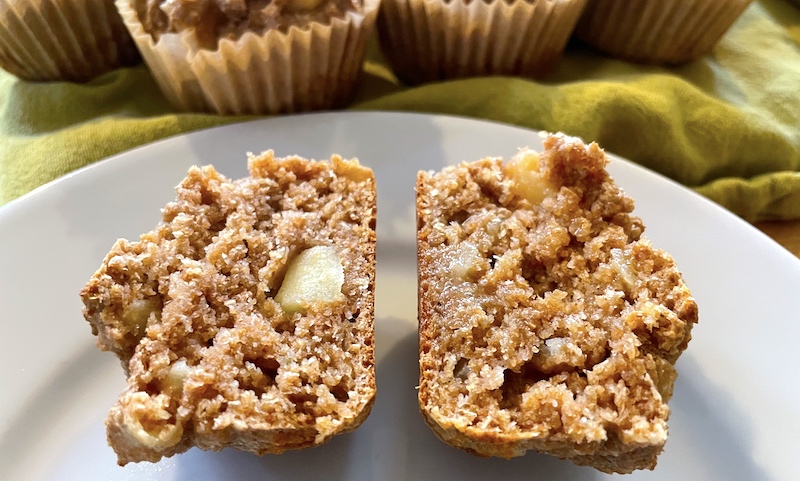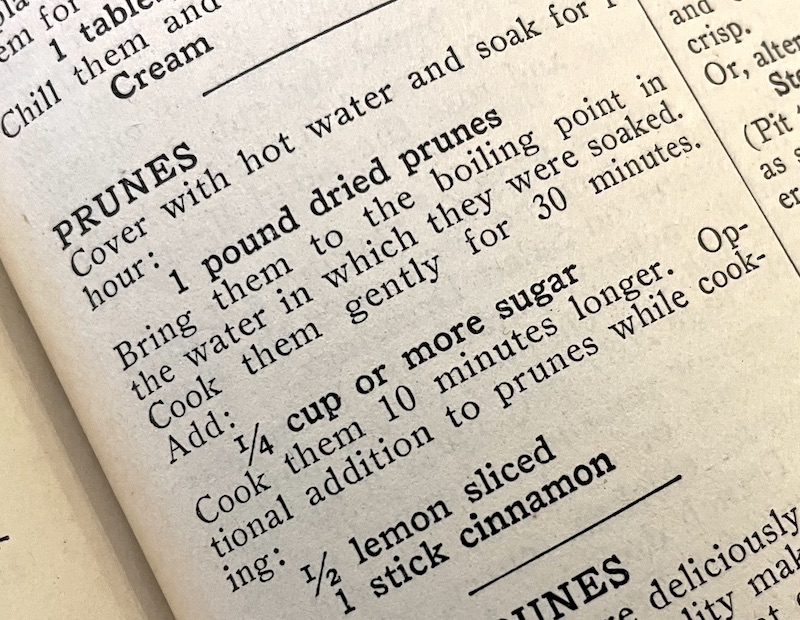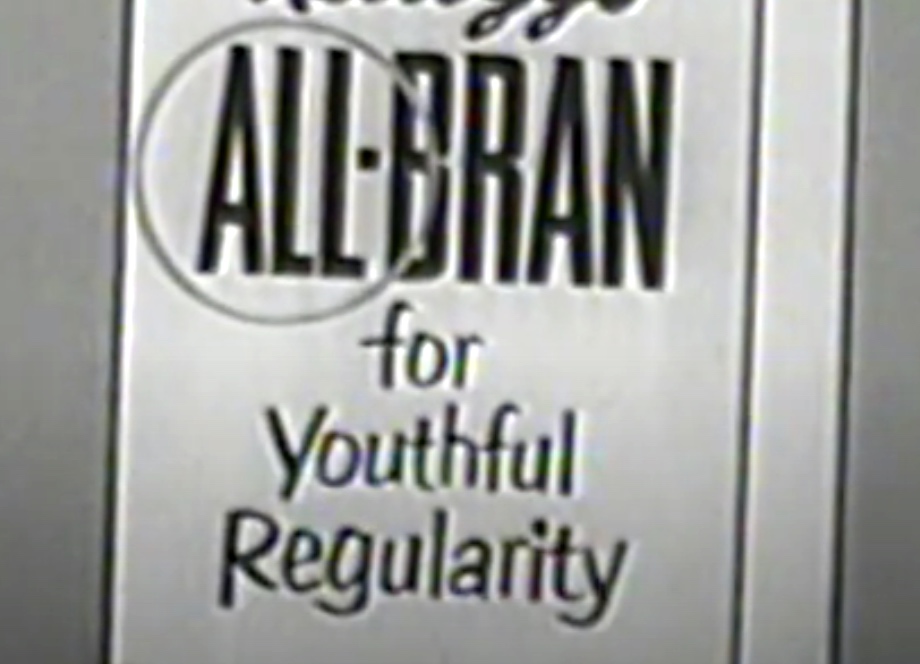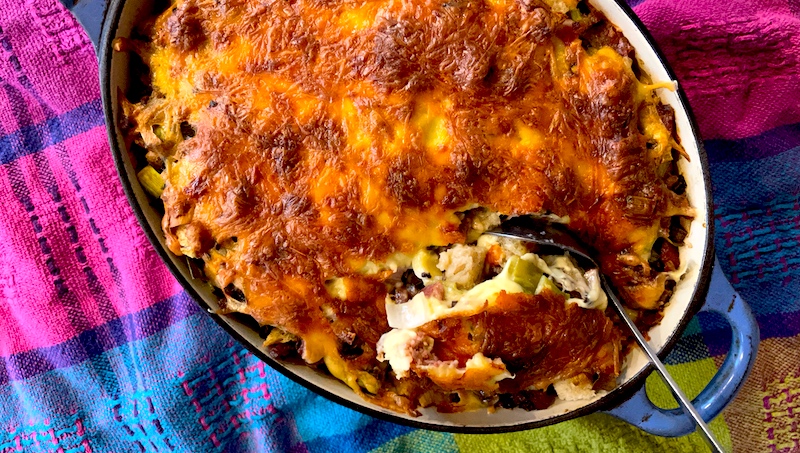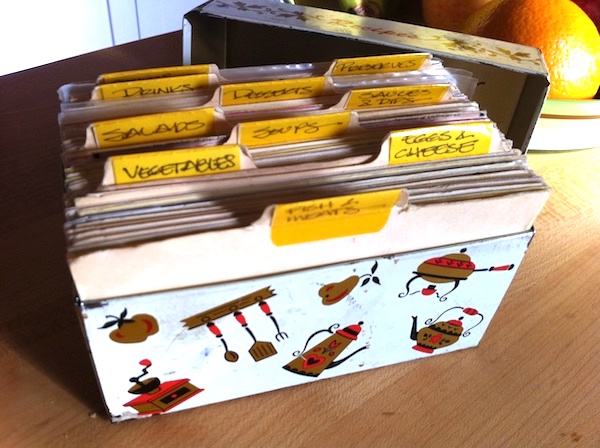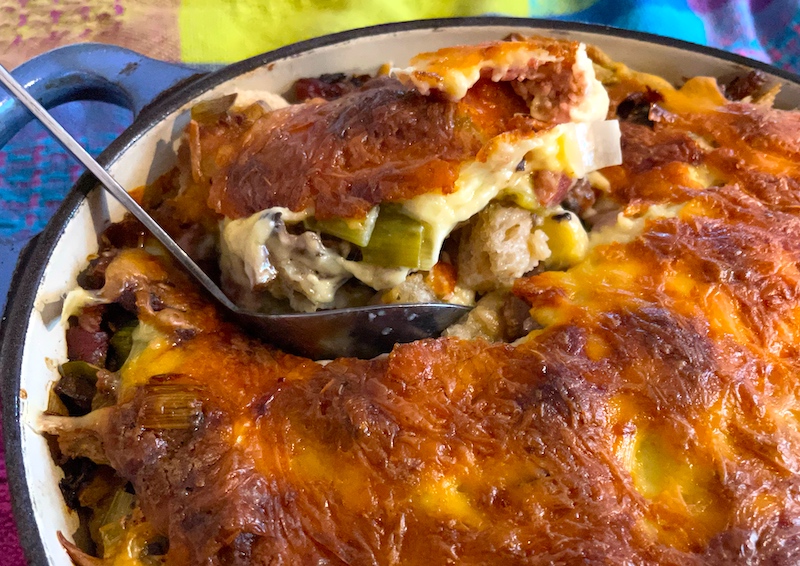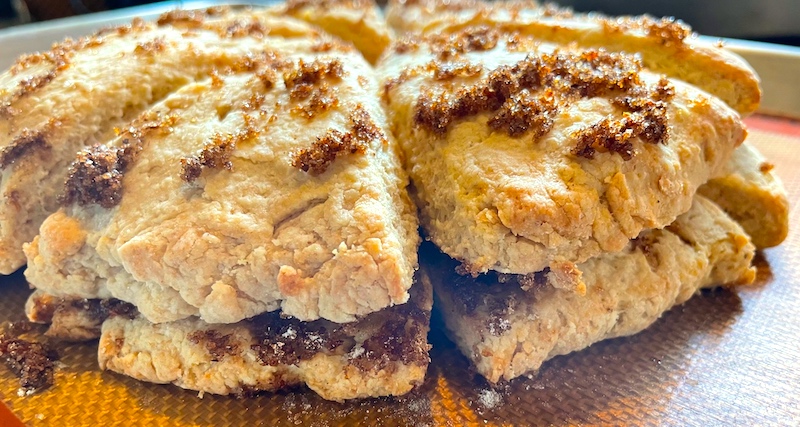
Good Things Come to Those Who Wait: Orange Cinnamon Filled Scones
The saying above was never more true. I've been waiting months for Dave to be satisfied enough with this recipe to share it with you all, and the time has finally arrived!
Regular readers will know that Dave relentlessly trolls baking websites, blogs and videos for ideas that he tries out on his willing victims, aka his family, and regularly hands out samples to friends, neighbors and postal carriers alike. (Just yesterday our mail carrier, Fred, who has been plied with the aforementioned samples, said we can text him any time to let him know if we have extras to get rid of.)
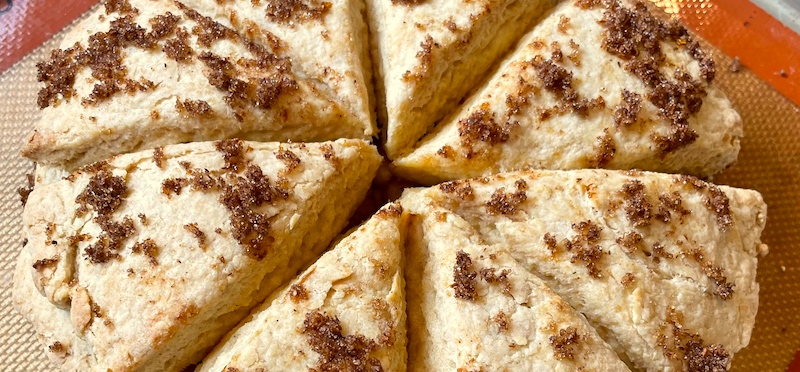 The journey of these scones started with a Genevieve Ko recipe in the New York Times for a favorite she'd had from an Alabama restaurant that they called orange rolls. What caught Dave's eye was that these didn't require yeast, multiple risings or refrigerating overnight, the better to put together for our usual late-morning breakfast. Describing them as "pretty okay" after a test run, Dave mused that it might be possible to rework them as scones, both to save time and get around the hassle of rolling out the dough, spreading the filling, rolling up the dough and slicing them—especially if you haven't had enough coffee yet.
The journey of these scones started with a Genevieve Ko recipe in the New York Times for a favorite she'd had from an Alabama restaurant that they called orange rolls. What caught Dave's eye was that these didn't require yeast, multiple risings or refrigerating overnight, the better to put together for our usual late-morning breakfast. Describing them as "pretty okay" after a test run, Dave mused that it might be possible to rework them as scones, both to save time and get around the hassle of rolling out the dough, spreading the filling, rolling up the dough and slicing them—especially if you haven't had enough coffee yet.
If you've made his recipe for Orange Currant Scones, you know he's got that particular pastry nailed, so it took a few attempts at perfecting the dough-to-filling ratio to get the rise he wanted and keep the just-sweet-enough-but-not-too-sweet flavor profile we prefer.
So, finally, here it is—tadaaaaaaa—our new favorite morning pastry!
Dave's Orange Cinnamon Filled Scones
390 grams all-purpose (AP) flour (Dave used half AP and half sifted home-milled Camas Country Mill hard white flour)
3/4 tsp. fine sea salt
1 Tbsp. granulated sugar
1 Tbsp. baking powder
1/4-1/3 c. sour cream (see note below)
2/3-3/4 c. whole milk or half-and-half (see note below)
2 heaping Tbsp. brown sugar
1/2 tsp. ground cinnamon
Zest of one orange
1 stick of butter (1/2 c.), very cold, cut into 1/4" cubes
1 large egg
Preheat oven to 350°.
Add the flour, sea salt, sugar and baking powder to a large bowl and lightly whisk. Pour into the bowl of a food processor.
Cut the very cold butter into 1/4" pieces and toss into the food processor with the flour mixture. Pulse for 7 to 10 seconds until the butter is in tiny pieces, approximately the size of fennel seeds.
Pour the flour mixture back into the large bowl.
Spoon the sour cream into the bottom of a one-cup measuring cup, then add milk or half-and-half enough to measure 1 cup. Whisk with a fork.
Break the egg into a small bowl and whisk with a fork.
Pour the milk mixture into the egg and whisk briefly until the yolk is thoroughly mixed in.
Put the brown sugar and cinnamon into a small bowl and mix together. Add the orange zest and mix again. You might have to rub it into the sugar and cinnamon mixture with your fingers.
Add the milk-egg mixture to the flour mixture and mix until all the dry ingredients are moistened and the dough can be formed into a mass. Knead three or four times. Cut the dough into two equal pieces. Flatten each piece into a circle about 8 inches in diameter (a rolling pin helps).
Spoon half of the cinnamon/sugar/zest mixture onto one of the dough pieces and spread it as evenly as you can. It’s OK to have some sparse spots. Layer the other flattened piece of dough on top of the first. Spread the rest of the cinnamon mixture on top as evenly as possible.
Place the assembled dough on a baking sheet lined with parchment. Cut like a pie into eight wedges (you don’t need to separate them).
Bake for 22-25 minutes, turning front-to-back halfway through, until a tester stuck into a couple of the wedges shows they are baked through.
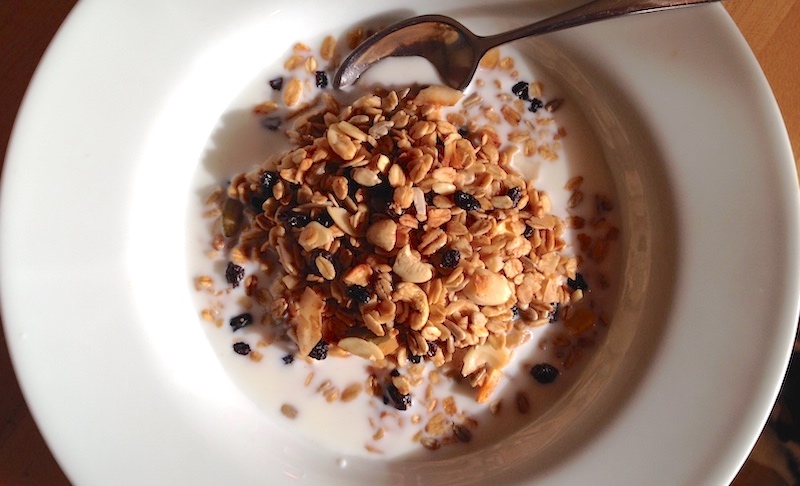

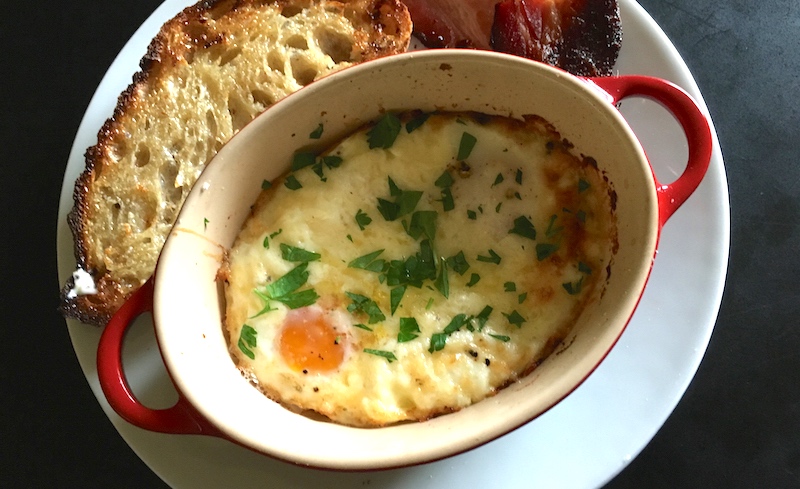
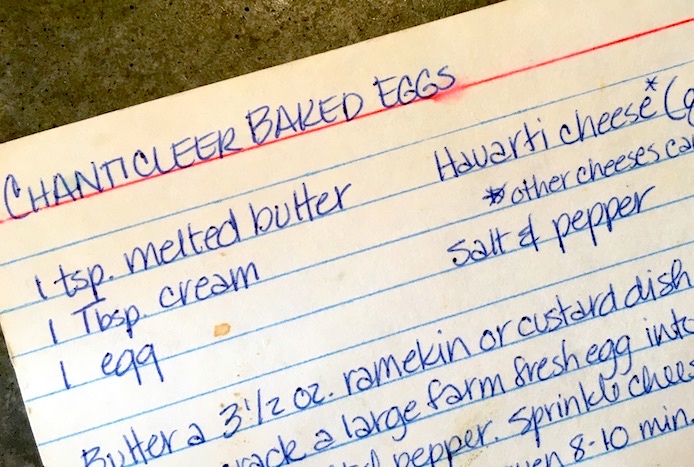 Now, a dish can burrow its way into your brain for lots of reasons—a romantic setting, great company, a few too many mimosas—but this one was alluring because of its simplicity. Just butter, eggs, cream and cheese baked to a golden finish, crispy yet creamy, the yolks still oozing.
Now, a dish can burrow its way into your brain for lots of reasons—a romantic setting, great company, a few too many mimosas—but this one was alluring because of its simplicity. Just butter, eggs, cream and cheese baked to a golden finish, crispy yet creamy, the yolks still oozing.